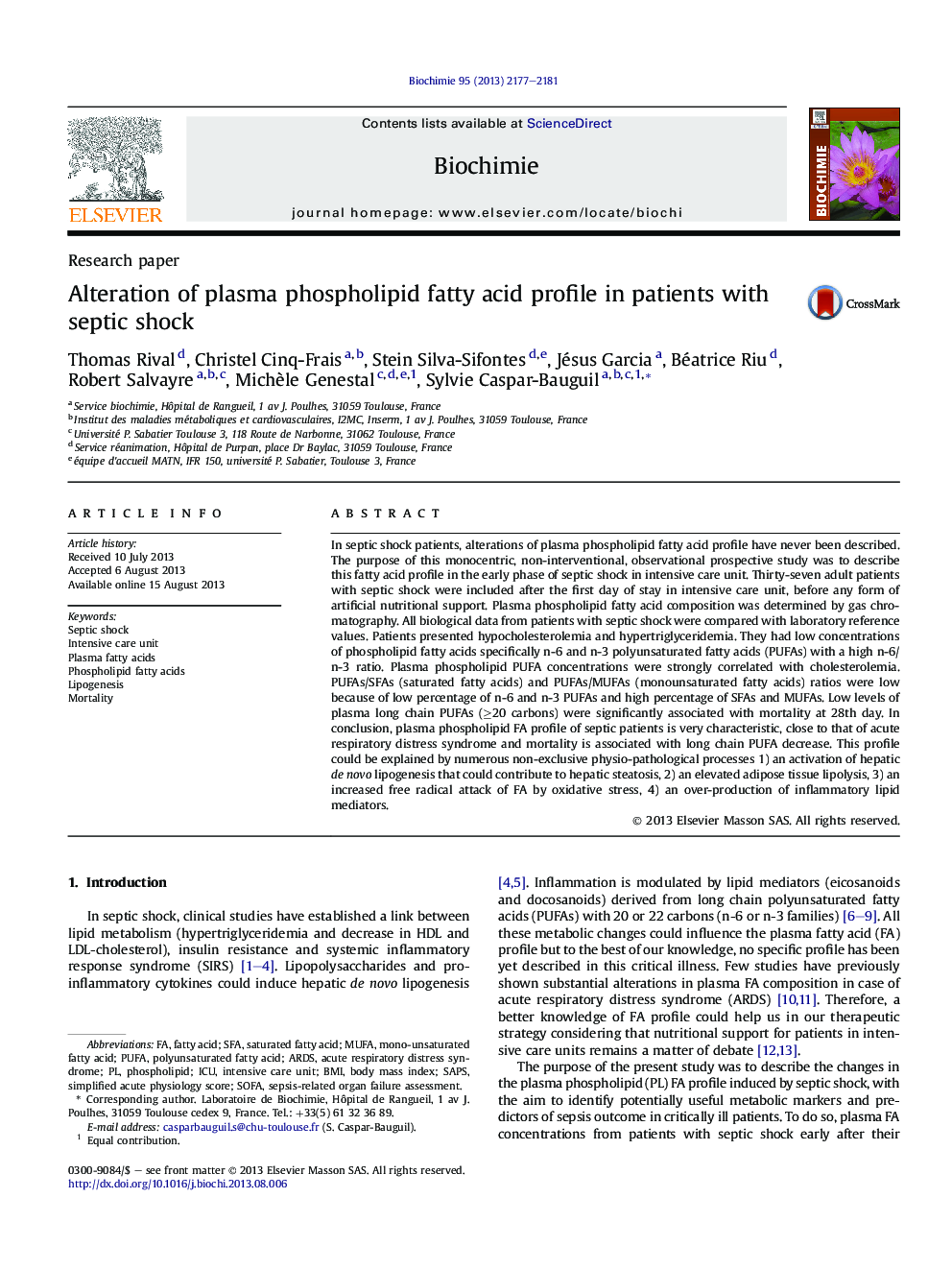| کد مقاله | کد نشریه | سال انتشار | مقاله انگلیسی | نسخه تمام متن |
|---|---|---|---|---|
| 1952172 | 1057182 | 2013 | 5 صفحه PDF | دانلود رایگان |

• The plasma fatty acid profile in septic patients was never described.
• We examine changes in the fatty acid profile of septic patients before nutritional support.
• We have shown similar fatty acid profile between septic shock and ARDS.
• We have observed a LC-PUFAs decrease associated with mortality.
In septic shock patients, alterations of plasma phospholipid fatty acid profile have never been described. The purpose of this monocentric, non-interventional, observational prospective study was to describe this fatty acid profile in the early phase of septic shock in intensive care unit. Thirty-seven adult patients with septic shock were included after the first day of stay in intensive care unit, before any form of artificial nutritional support. Plasma phospholipid fatty acid composition was determined by gas chromatography. All biological data from patients with septic shock were compared with laboratory reference values. Patients presented hypocholesterolemia and hypertriglyceridemia. They had low concentrations of phospholipid fatty acids specifically n-6 and n-3 polyunsaturated fatty acids (PUFAs) with a high n-6/n-3 ratio. Plasma phospholipid PUFA concentrations were strongly correlated with cholesterolemia. PUFAs/SFAs (saturated fatty acids) and PUFAs/MUFAs (monounsaturated fatty acids) ratios were low because of low percentage of n-6 and n-3 PUFAs and high percentage of SFAs and MUFAs. Low levels of plasma long chain PUFAs (≥20 carbons) were significantly associated with mortality at 28th day. In conclusion, plasma phospholipid FA profile of septic patients is very characteristic, close to that of acute respiratory distress syndrome and mortality is associated with long chain PUFA decrease. This profile could be explained by numerous non-exclusive physio-pathological processes 1) an activation of hepatic de novo lipogenesis that could contribute to hepatic steatosis, 2) an elevated adipose tissue lipolysis, 3) an increased free radical attack of FA by oxidative stress, 4) an over-production of inflammatory lipid mediators.
Journal: Biochimie - Volume 95, Issue 11, November 2013, Pages 2177–2181